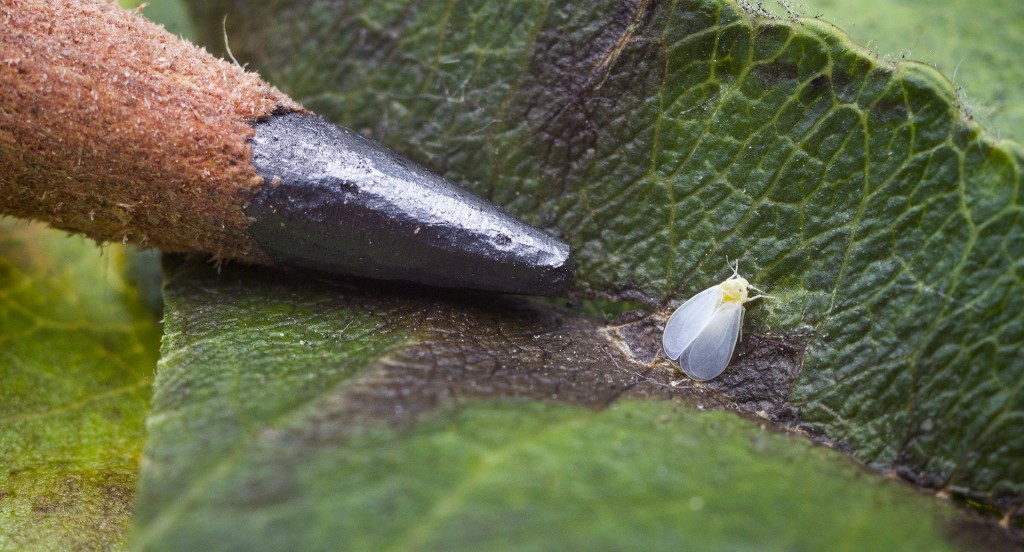When you talk about pests on plants, whitefly is one of the most common and most damaging pests. The reason is that the whitefly population can explode quickly and can cause severe infestations. That means once they have taken hold, they are adamant about eliminating, because of which it becomes crucial to recognize the early signs of infestations, and looking for whitefly treatment for plants is the right move.
But before we come to know the various early signs of infestation, let’s discuss whiteflies.
What are whiteflies?
Whiteflies are very soft-bodied, winged insects closely related to aphids and mealybugs. Despite their name, they are not that type of fly, though they have wings and can quickly fly. If you talk about how they look, they can be as small as ½ of an inch and have triangular shapes and are usually found in clusters on the undersides of leaves.
Whiteflies are active in the daytime and easily scatter when gets disturbed. All over the world, there are hundreds of species of whiteflies that affect a wider range of plants.
Pest Type – Garden pests
Plants Affected –
- Tomatoes
- Bell Peppers
- Eggplants
- Okra
- Sweet Potatoes
- Cabbage
Where do whiteflies come from in indoor plants?
Many times it looks like whiteflies come from nowhere. That means one day, your plant is fine, and the next day, there are tons of whiteflies around, which will leave you surprised. Some of the common causes that welcome whiteflies are: –
- When you put houseplants outside in the summer season
- Bringing home a new plant home and it has whiteflies
- When you use contaminated potting soil
- Can come from window screens as they are very small in size
- While bringing fresh flowers, fruits, vegetables, and herbs from the garden
Where are whiteflies found?
Whiteflies cannot live in the winter outdoors, so they are usually found in indoor plants or greenhouse environments. However, if outdoor plants are bought from an infested greenhouse, they will become seasonal outdoor garden pests. That is why it becomes essential to inspect the plants before bringing them home.
What are the different plants that are susceptible to whiteflies?
There are many plants, starting from ornamental flowers to warm-weather vegetables like peppers, okra, eggplant, and tomatoes. Apart from that, some of the whiteflies species also attack sweet potatoes, citrus trees, and plants from the cabbage family.
Moreover, they also feed on some houseplants with soft and smooth leaves.
How to recognize the presence of whiteflies?
In order to recognize the whiteflies, you have to take a closer look at the plant and look for insects or eggs on the underside of the leaves. Now the question is what to watch for in plants to know the whiteflies?
So, watch for swarms of tiny bugs that can easily fly off plants when you approach.
Signs of whiteflies- On the underside of the leaves, check for the presence of black sooty mold or ants, which can easily attract towards a sweet honeydew substance that whiteflies secrete.
How to get rid of whiteflies?
There are various solutions and traps to control the whiteflies, but the biggest tip is to start early if you want your plants to stay healthy. That means whenever you wander the garden, make sure to check the backside of the leaves for eggs or tiny bugs which fly away when you approach them.
Apart from that, let’s start with how to get rid of whiteflies: –
1. Vacuum the infected plants
This is the first step that will work wonders and save your plants. The reason to choose vacuum is shooing them away or flicking them won’t work, and come back early. So, take a small handheld vacuum and remove the flies and their larvae.
However, when you hover over these tiny pests in a vacuum, don’t dump them in the trash. Instead, dump them into a plastic bag and seal the bag before throwing them away. The reason to do this step is whiteflies will fly out from the trash and head back to plants again.
2. Yellow sticky traps for whiteflies
This is another best way to trap the whiteflies and kill them. These traps are designed to trap and kill the adults, which will work best. However, these Whitefly sticky traps are non-toxic and can be used indoors.
To do this, just take a yellow sticky trap and hang it from the top branches of the plant.
3. Remove the most damaged leaves
When whiteflies feed on one leaf, they suck out all leaf juices before moving to the next one. When this process continues, the plant starts sending its energy to damaged leaves until removed.
So, in order to get rid of whiteflies, take sharp garden nippers or pruning shears and clip off those leaves and also waxy fluid. Now seal those damaged leaves in a plastic bag before throwing them in the trash.
4. Use neem oil
Neem oil is derived from the neem tree, and it has insecticidal properties. It also has fungicide and has systemic benefits, which means some of its oil is absorbed by plants while offering persistent protection.
Therefore, take oil as an insecticidal soap to control the whiteflies population. But it needs several applications to eliminate the problem.
The bottom line
Without quick action, whiteflies can easily damage many plants, which we have discussed above. But if you recognize them early and apply the above methods, the whiteflies infestation can be stopped then and there. In addition, looking for whitefly treatment for plants is the best option.
I hope this post is helpful for you in getting rid of whiteflies!
Author – Eric Kohler, marketing manager and strategist at tree doctor, focused on marketing, communications, events, and awareness of tree and plant health care needs. Whether you have a lawn, yard, or landscaping business, you need to take care of the unique needs of tree and plant species so that they remain healthy, vibrant, robust, and have constant growth.
Most people are unaware of the three stressors and how to get rid of them. So, to throw light on potential tree dangers, treatment to control, and boost tree health to stand strong during unwanted weather conditions as well as attacks of diseases, insects, and pests, he passionately writes on tree healthcare, preservation, nutritive care, and treatment. Keep reading his recent articles to be familiar with tree and plant health problems, assessment, treatment, prevention, how to enhance tree and plant longevity, stabilize matured and sick trees in San Diego.


